Moonshots: Mines made significant contributions to the space race of the 20th century and now plays a central role in a new race to learn more about space resources
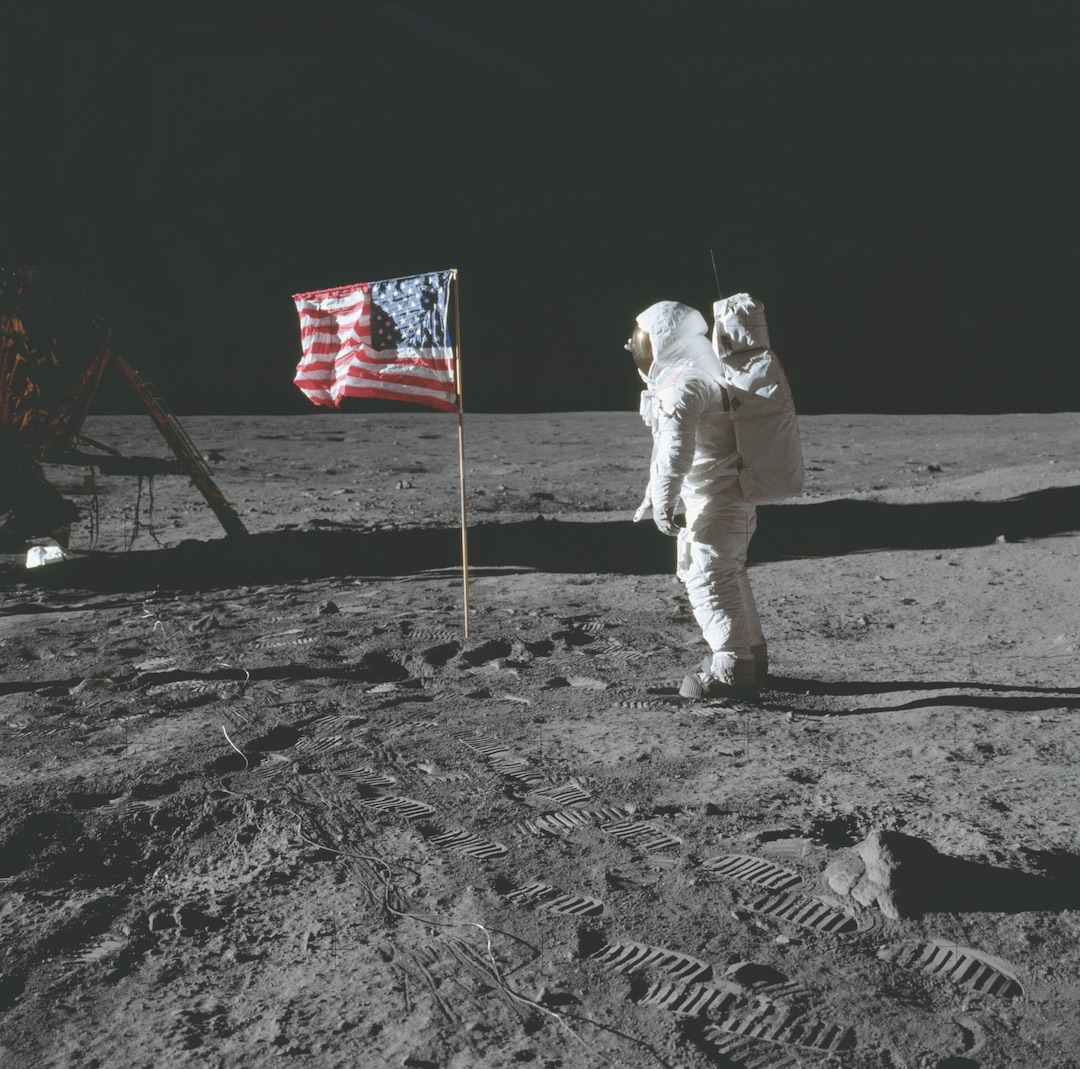
On July 20, 1969, at 10:56 p.m. Eastern time, astronaut Neil Armstrong touched his foot to the Moon’s surface, famously declaring, “That’s one small step for man, one giant leap for mankind.”
Minutes later, Armstrong was joined by fellow Apollo 11 astronaut Buzz Aldrin. A camera recorded their progress, their tentative steps turning to leaps and bounds as they gained confidence negotiating the lunar surface.
For the next two hours, 600 million people around the world sat glued to their televisions as the astronauts bounced through the dusty, rocky terrain, collecting samples and recording their observations. “It has a stark beauty all its own,” Armstrong said of the Moon’s surface.
Though it was conceived as a Cold War rebuttal to the Soviet Union, the first lunar landing united the world with excitement for a feat people had never thought possible. Since then, researchers around the world have been actively studying the Moon and the seemingly unlimited expanse of outer space, and Mines is at the forefront, making giant strides in our knowledge of this new frontier.
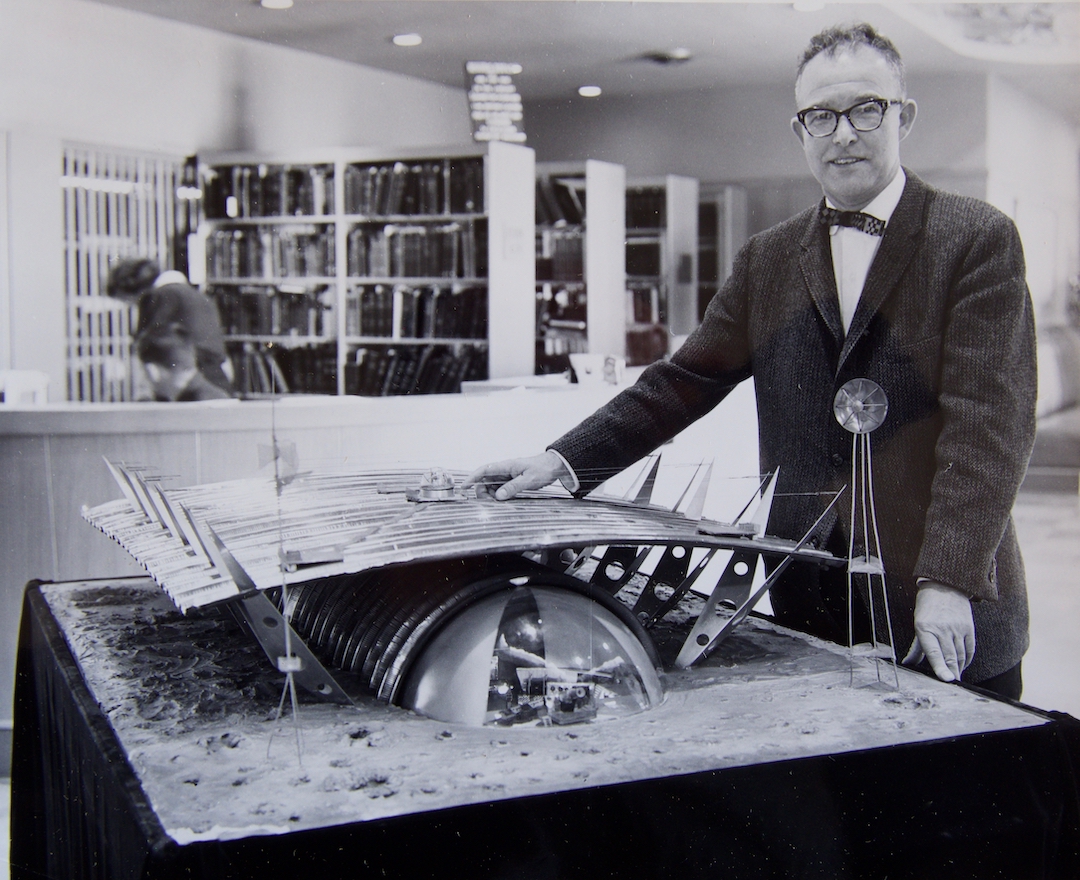
Space resources at Mines: then and now
From the aerospace industry’s infancy to the present day, Mines experts have made vital contributions to space research.
The Apollo program went on to achieve five more successful lunar landings in the 1960s and ’70s, and Mines researchers joined NASA scientists in analyzing rock samples the astronauts collected to discern their electrical and magnetic properties. The school was also involved in early discussions about lunar bases and was one of the few academic institutions invited to participate in NASA’s first meeting, in 1962, about using extraterrestrial resources to support space missions.
The Apollo program came to an end in 1975, and over the years, the space program’s focus shifted to other areas of research. But Mines scientists continued their work with NASA, receiving grants for space shuttle and International Space Station projects and gaining a national reputation for expertise in space resources. Planetary geologist Michael Duke, NASA’s first science curator of the Apollo lunar rocks, brought his expertise to Mines to direct the Center for Commercial Applications of Combustion in Space, which later became the Center for Space Resources. The school also received small amounts of lunar rocks, pebbles, sand and dust from NASA and used them to create simulants of regolith, or lunar soil, to use in experiments.
But Mines is poised to play an even greater research role as the space program changes its focus once again.
“Now we’re entering a second race—to develop the resources in space,” said Angel Abbud-Madrid, director of the Center for Space Resources. This means harnessing new fuel sources—such as water and solar energy—and using materials that are readily available in space, rather than transporting resources from Earth, making astronomically expensive expeditions more economically feasible. With that possibility in mind, space fever is making a comeback and Mines is leading the charge.
“For 145 years, we’ve been focused on identifying and extracting resources on Earth. Now we want to do the same thing in space. From very early on, we were aware that resources from space would be important,” Abbud-Madrid said.
Professors and students in every department at Mines are involved in some dimension of space research, Abbud-Madrid said. Geological and geophysical engineers decide how to look for large concentrations of resources. Mining, petroleum, mechanical and electrical engineers design rovers, excavators and drilling systems suited to the unique soil and low-gravity conditions of the Moon. Chemical engineers work on ways to extract water and gases from the Moon, asteroids and Mars. Materials engineers design space manufacturing systems. And economists carry out analyses to make sure all projects are more than just dreams.
“Mines gives students a broad education in the field. They know geology and engineering but also economics and policy implications,” Abbud-Madrid said.
Although its research involves multidisciplinary knowledge, Mines developed two formal entities to propel space resources into the future: the Center for Space Resources and the new space resources graduate program, the first of its kind in the world.
Researchers in the Center for Space Resources have been studying how to identify and extract the water, gases, metals and minerals in space for more than 20 years and host a yearly roundtable attended by renowned engineers and scientists from around the world to discuss ideas and developments in their research.
Classes in the new space resources graduate program started in fall 2018, and the online program now has 45 students from 10 countries, including many professionals in aerospace and mining, as well as scientists, economists, entrepreneurs and policy analysts. In addition to taking classes and listening to experts, they network via videoconferences and work on joint projects, connecting the dots in a multidimensional field with no central information clearinghouse.
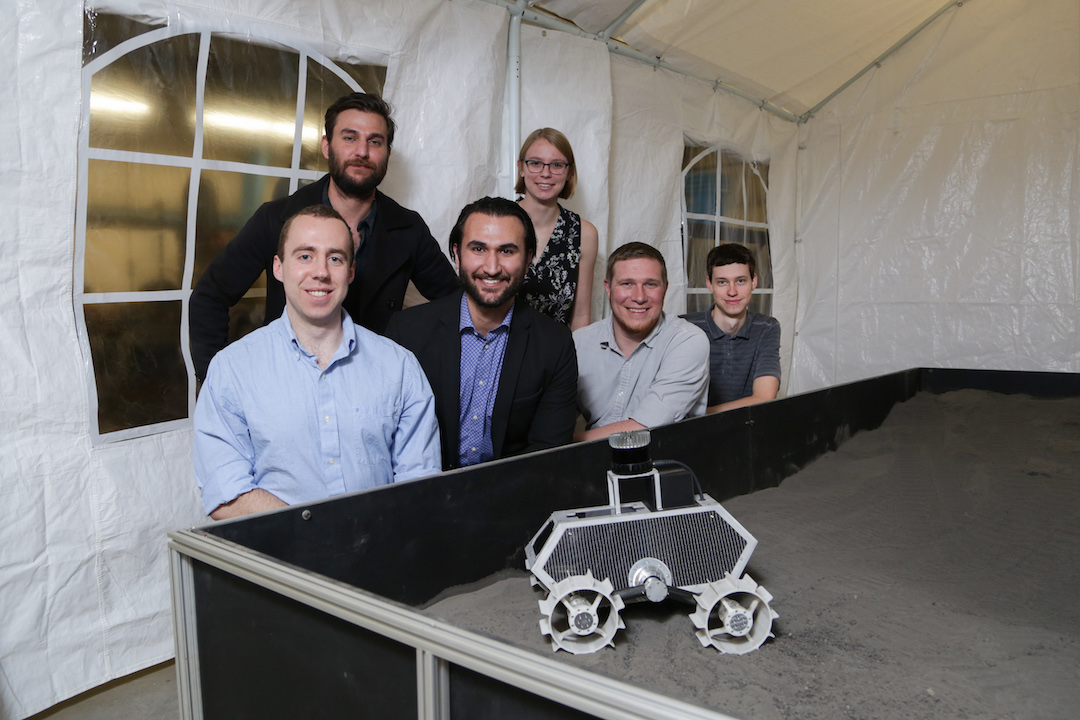
Probing the Moon
Beyond the graduate program and the Center for Space Resources, professors and students have received numerous grants and regularly win NASA competitions. Space research clearly remains an attractive pursuit with seemingly endless opportunities.
PhD student Justin Cyrus MS ’16 took the next step, creating the startup Lunar Outpost, which has developed a lunar prospector—an autonomous vehicle with an attached drill to probe the Moon’s surface and on-board mass spectrometers to analyze the samples it collects.
Cyrus uses Mines’ lunar testing facility, located at the school’s Excavation Engineering and Earth Mechanics Institute, to carry out trial runs for the prospector and has received support from other researchers in the Center for Space Resources. “The last space resources roundtable was all about lunar prospecting. They had some of the world’s leading researchers, and I bounced ideas off them and picked their brains,” Cyrus said.
Mines’ broad academic expertise proved invaluable in helping him refine his ideas. “There are many strong professors in robotics, mechanical and electrical engineering and computer science,” Cyrus said. “There’s no department on campus that’s not cutting-edge.”
Cyrus recruited some of his 19 employees from the school, including a few from the space resources graduate program. “Mines trains really good future engineers. It’s a direct pipeline,” he explained.
Cyrus expects to make an announcement sometime this year about a future Moon landing. He also hopes to work with NASA, which is soliciting lunar surface technology. “They’re looking for low-cost commercial landers, and we believe our lightweight prospector is a good fit,” he said.
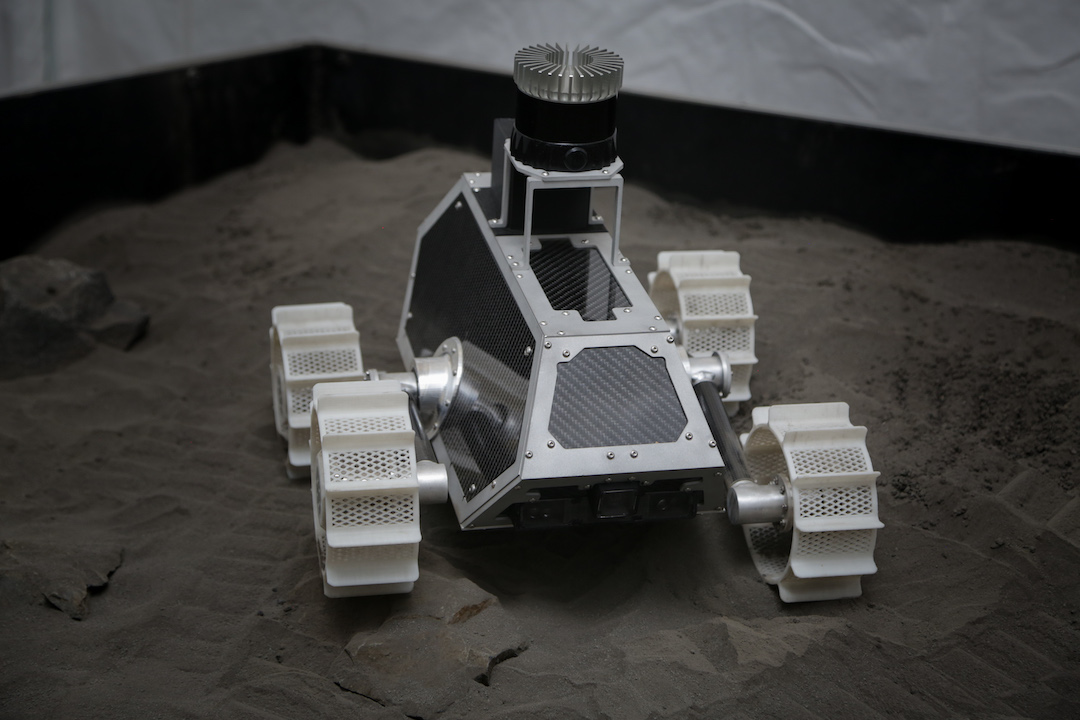
Tapping Mines resources
Cyrus is by no means the only employer to notice Mines students’ aptitude for aerospace-related skills. Aerospace is the third-largest employment sector for Mines graduates, who are highly sought-after, even though the school doesn’t offer a formal aerospace degree.
Caroline Ellis ’18, who was recently hired as a flight controller at NASA’s Johnson Space Center in Houston, is one such graduate. She remembers stretching her brain in Abbud-Madrid’s Intro to Space Exploration class. “He posed big, open-ended questions, and we had to engineer through problems no one has solved,” she said. “You have to reach into the boundaries of your mind and figure out how to do things no one has ever done.”
The class and a NASA competition, in which she helped build a drilling system to extract water from the subsurface of Mars, led to her current job. “Working at NASA was my dream. I’m excited it happened so quickly,” she said.
Ellis’ dedication and problem-solving skills are qualities that many aerospace employers look for when recruiting new hires. “Mines engineers are broad-based problem-solvers, not just in technical fields, but in economics, social responsibility and entrepreneurship. They are phenomenal engineers, and they also have the ability to adapt,” said Paul Anderson ’85, an Orion program director at Lockheed Martin and co-chair of Mines’ Aerospace Interest Group.
Lockheed Martin is currently working on multiple human and robotic exploration projects of its own, and is NASA’s prime contractor for the Orion exploration spacecraft. It’s no surprise that Mines graduates are involved. “Right here in Denver, the next spacecraft capable of going to the Moon and Mars is being designed as we speak, and Mines graduates are a big part of it—today we have more than 30 Mines alumni working on the program,” Anderson said.
The Aerospace Interest Group, which started in 2017 and now has more than 300 members, helps spread the word about the school’s space expertise through its alumni network. Though Mines has a longstanding relationship with NASA and its contractors, new private companies like SpaceX and Blue Origin are becoming major players and embarking on projects of their own. Tapping Mines’ talent pipeline could help them reach their goals, as well as enhance the school’s reputation during the next generation of space missions.
Space research has come a long way since the first Moon landing 50 years ago, and Mines has played an integral part at every step along the way. With space resources viewed as the key to the future, the school is poised to play an even greater role.
“The Apollo program got a whole generation excited about space. Now people are seeing the value of space resources and that feeling is here again,” Abbud-Madrid said. “Apollo ended abruptly because it was a matter of winning a race. We won’t make that mistake again. We’ll make space travel sustainable and keep going.”
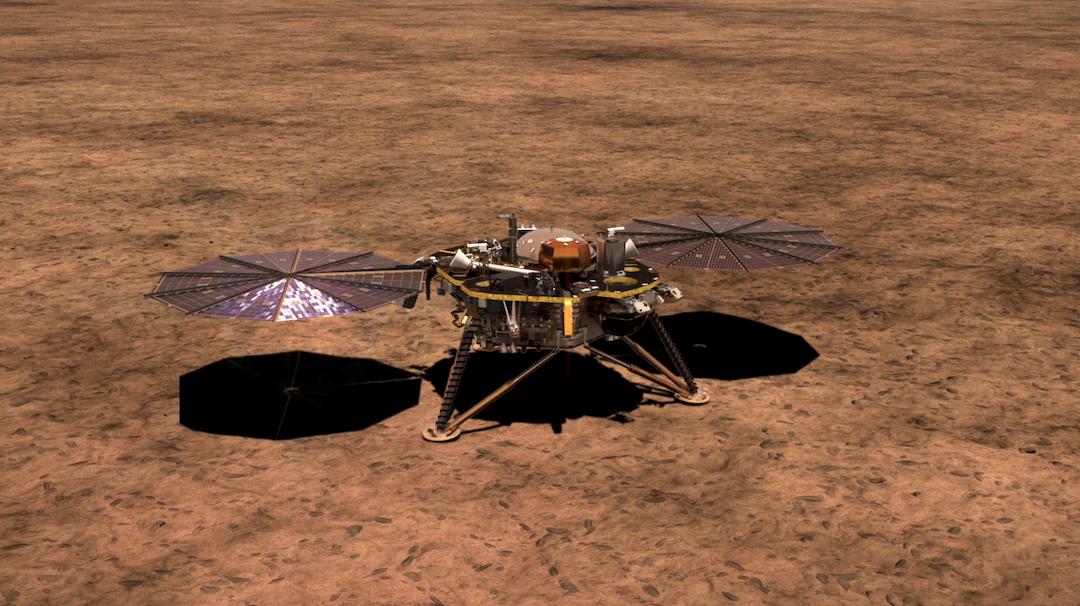
NASA’s InSight lander: exploring the interior of Mars
If astronauts want to mine resources on other planets, they first need to understand extraterrestrial geology.
NASA’s InSight lander mission, which landed on Mars on Nov. 26, 2018, is the first dedicated to seeking geophysical information about another planet. Paul Morgan, a senior geothermal geologist at the Colorado Geological Survey at Mines, is a member of the InSight lander’s science team and helped build a probe that will measure the heat coming from Mars’ interior.
Morgan and two other scientists created a Heat Flow and Physical Properties Probe (HP3) designed to burrow as far as 16 feet into Mars’ surface—deeper than any probe or drill has gone before.
The probe will measure the heat coming from the planet’s interior, providing clues about the resources it might contain. On Earth, ore deposits were formed over millions of years and brought up to the planet’s crust by volcanoes and other geothermal activity. While these processes ceased long ago, they appear to be recent occurrences on Mars, Morgan said. Measuring internal heat flows will give scientists a better idea of where iron ore and other mineral deposits may be located.
It may also give them an idea of what Earth looked like in the past. “Our ore deposits and the early evolution of life happened at a time when Earth was completely different from the way it is now. We’d like to understand those processes. Mars may be able to help—it seems frozen in that earlier period,” Morgan said.
The probe may also reveal a vital resource: water. Like Earth’s moon, Mars has ice on its surface that might someday be separated into oxygen and hydrogen to be used as fuel. But the water itself would be easier to work with. “There may be a depth at which water exists,” Morgan hypothesized.
Answers could come soon. The probe was deployed in February 2019. “By the end of March, we should be down 16 feet—if we don’t hit any rocks,” Morgan said. Once it hits its lower limit, the probe will remain in place for 687 days—a full Martian year—to track temperatures over time for accurate measurements.
Also aboard the InSight lander is a seismometer, which will measure “marsquakes” and any seismic signal, including meteorite impacts and dust devils, giving scientists information about Mars’ interior—for instance, the state of its core and the variations in its crust, known as the “crust dichotomy,” which is thin in the northern hemisphere but thick in the southern one.
Ebru Bozdag, an assistant professor of geophysics at Mines, is a member of the InSight science team studying the Mars’ seismology, which involves running 3D seismic wave simulations on supercomputers. The simulations will be used to explain the source of Martian seismic waves. Data from the InSight lander will help better constrain and update the models of Mars’ interior.
“We do not know yet if Mars has an all liquid core or also has a solid inner core. If we get a high-quality signal, we may discover the state of the Martian core and better estimate its size,” Bozdag said.
While the seismometer is being calibrated, scientists have already started receiving signals. “We’re looking forward to the first quakes from Mars,” Bozdag said. “Every wiggle we get from Mars will be precious and invaluable.”
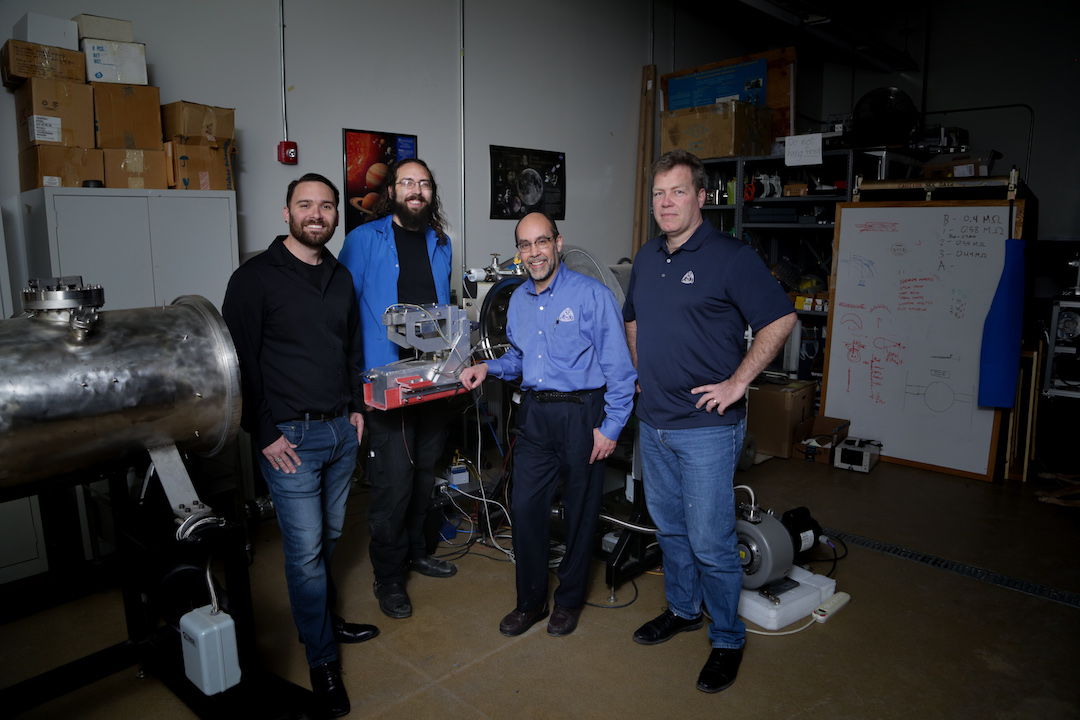
Why space resources matter
Mining resources in space will be a game-changer for exploration. Ninety percent of a rocket’s weight consists of fuel, which must be used not only to overcome Earth’s gravitational pull but sustain the mission and get the spacecraft back home. Under the current model, an extended stay on the Moon or a journey to Mars simply isn’t possible. “That’s fuel beyond the budget of any space agency in the world,” Abbud-Madrid said.
Instead, astronauts may be able to obtain fuel, as well as building materials and life-sustaining water and oxygen, from space. The Moon’s polar regions have an abundance of ice, and many asteroids contain large quantities of water.
In addition to being used for consumption, radiation protection and cleaning, water could be separated into hydrogen and oxygen and used as a propellant. Refueling at a space depot would lighten loads considerably, lowering the cost of landing a kilogram on the surface of the Moon from $35,000 to $11,000.
As Abbud-Madrid puts it, “Water is the oil of space.”


